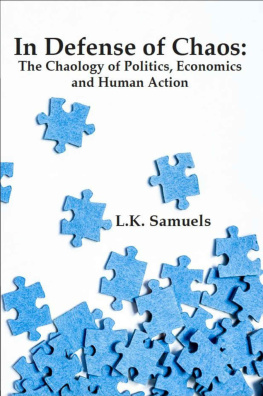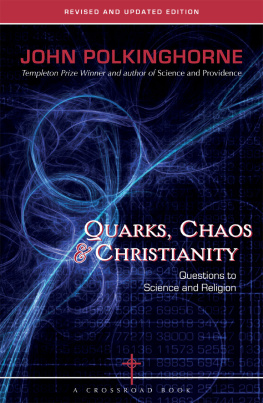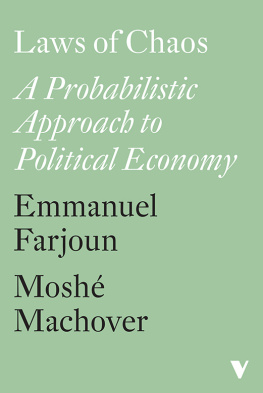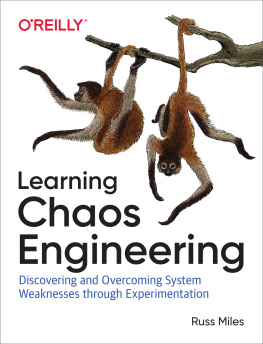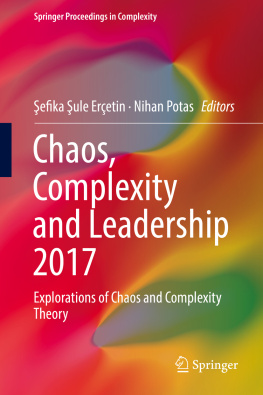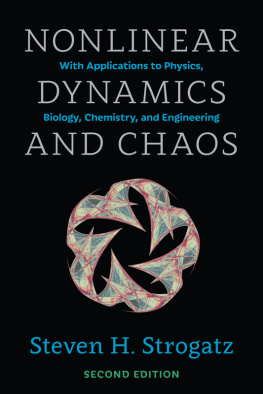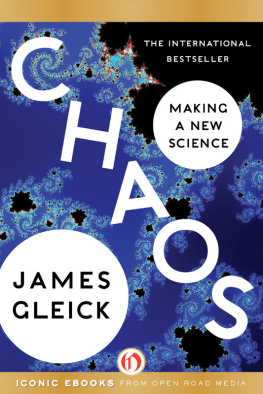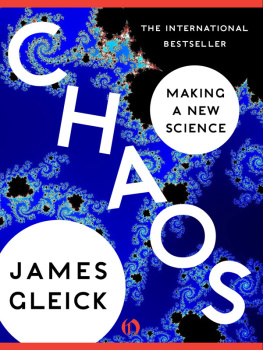

Copyright 2013 by L.K. Samuels
Published by Cobden Press
5647 Adobe Road #55
Twentynine Palms, CA 92277
(480) 684-2651
www.fr33minds.com
Illustrations: 2013 istockphoto.com/
SimoneBecchetti
All Rights Reserved, Published 2015
Printed in the United States of America
ISBN 978-1-935942-08-5
L.K. Samuels
In Defense of Chaos: The Chaology of Politics, Economics and Human Action
ISBN 978-1-935942-08-5
1. Chaos Theory 2. Political 3. Socioeconomics
I. Title II. Samuels, L.K.
Printed in the United States of America
First Printing, 2013
Revised, 2015
Contents
:
Foreword
How do you hold a moonbeam in your hand? How do you keep a wave upon the sand? These words from The Sound of Music bring out the elusive nature of chaos. In life, most things cannot be captured for long. It is like trying to encapsulate time itself.
Starting from an accident in a computer software program to predict future weather, scientists in every discipline began to see something fascinating in how the chaotic systems played on the dynamic stage. They discovered hidden order in chaos and hidden chaos in order. Not long after that revelation, chaos theory as a promising new science was born.
For me, it all began back in the late 1980s. A dear friend, Dagny Sharon, made me aware of this new science, along with its socio-economic and political implications. She insisted that the mechanics of chaos theory had the possibility of completely changing the world as we knew it. And in that friendly discussion, she suggested that chaology had the potential to prove scientifically that the flexible, open-ended systems of a free society indeed work, compared to the closed, inflexible and anti-evolutionary systems often employed by governments. At the time, I simply pondered the possibilities of an obscure science.
Then along came Michael Crichtons book Jurassic Park, and later the movie, which encouraged me to delve deeper into theories that offered a better explanation of how both the universe and society truly operate. Soon after that, I discovered James Gleicks Chaos: Making a New Science and other books. I began to put words to paper around 1992 when I found myself stranded in the small desert town of Inyo-Kern, waiting for an auto mechanic shop to replace my broken transmission. I wrote for days, and so began my excursion into writing a book on a subject that almost seemed to defy description. Those early writings in the desert eventually became the first chapter of this book
The internet was of little help in the beginning, because it lacked the wealth of information required to research chaos and complexity science. But by 2007 and 2008, the internet and its resources had exploded with a cornucopia of related material. In early 2011 I sent my manuscript to two professional editors for publishing.
Although I had minored in journalism, my background did not seem to lend itself to writing a book on science, politics and economics. While the editors peppered me with questions about syntax, sources and logic, I searched for an understanding publisher. Fortunately, I found a think tank eager to be my publisherCobden Press of the Moorfield Storey Institute, founded by James Peron.Writing is a lonely endeavor, but what makes it possible is support of friends, family and colleagues.
I would like to thank a number of my cheerleadersmy wife, Jane Heider, who went through the book determined to clean up all of my grammatical indiscretions; Prof. David R. Henderson, who looked over a number of chapters, especially the one on economics, giving me many valuable suggestions; my editors Jackie Estrada from San Diego and Elizabeth Brierly from the San Jose area, and my final proofer, Linda Blumenthal.
This odyssey has led me to one major conclusion: chaology and complexity science will change the way we think. With more knowledge about the workings of this new science, humanity will be set free to consider and pursue every conceivable possibility.
| 1 | The BeginningDefense of Chaos and Complexity |
Chaos is the law of nature; order is the dream of man.
Henry Adams, historian
There is no detailed blueprint, only a set of laws with an inbuilt facility for making interesting things happen. The universe is free to create itself as it goes along.
Physicist Paul Davies, The Cosmic Blueprint (1988)
Why do things behave the way they do? Why do planets wobble, stars fluctuate, and galaxies bend? Why is the universe speeding up instead of slowing down? Why is observable matter in the universe clustered together in galaxies instead of being evenly spread out across vast reaches of space?
Closer to home, how did simple molecules of the primordial soup produce the first cell, on a lifeless rock revolving around a thermonuclear sun? Or more fundamentally, how can evolutionary processes go against the laws of thermodynamicsa condition in which entropy demands that the universe must eventually grind down to a cold state of disorder and disorganization? And if entropy is always increasing, how can biological systems self-organize and achieve a higher order of complexity? These are just a few of the perplexities and paradoxes that have emerged from the fascinating field of chaos science: chaology.
The Origins of Chaos
For centuries, mathematicians and physicists ignored or overlooked any strange anomaly they encountered. They could hardly be blamed. They did not have powerful analytical tools to figure out why so many of their experiments resulted in erratic and inexact outcomes. They had no course of action other than to see randomness as just white noise, like static radio signals, or to conclude that their experiments had simply gone bad. In less publicized cases, scientists would actually smooth over, or linearize results, to make outcome fit theory, which geologist Thomas Chrowder Chamberlin referred to as pressing of the theory to make it fit the facts and a pressing of the facts to make them fit the theory. This confirmation bias would start to changeonce the power of computers and mathematician James A. Yorke had arrived on the scene.
A professor of mathematics and physics at the University of Maryland, Yorke had read an obscure but fascinating article penned in 1963 by meteorologist Edward Lorenz. Published in the Journal of Atmospheric Sciences, Lorenzs article discussed the curious outcome from a computer program designed to chart and study weather systems. While working at Massachusetts Institute of Technology (MIT), Lorenz had built one of the first computer modeling programs to simulate weather patterns. One day in 1961, Lorenz wanted to replay one particular sequence of his model. This time he decided to cheat: he started in the middle of the sequence instead of at the beginning. When he came back to the computer, the pattern had diverged wildly and evolved into an entirely different outcome from that of the original data. Dumbfounded, Lorenz started to search for the problem. He soon discovered why. In order to save paper, he had printed his report using three decimal places, not the usual six. Instead of typing in the normal 0.506127, he had input 0.506. Little did he know that this simple mistake would eventually usher in a new science so significant that mathematician Robert Devaney would refer to this science, chaos theory, as the third great scientific revolution of the 20th century, along with relativity and quantum mechanics.
Next page
